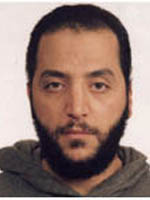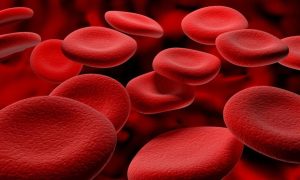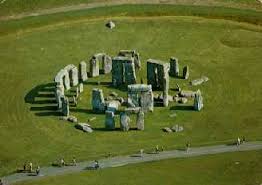 One of the world’s most famous monuments, Stonehenge abounds in mysteries and anomalies.
One of the world’s most famous monuments, Stonehenge abounds in mysteries and anomalies.
Why was Stonehenge built in the first place? Why was it radically transformed shortly before 2500 BC into a masterpiece of megalithic architecture? What explains the intricate, changing patterns of the stones over time? Why the extraordinary effort?
We now have answers to these and other questions, but to get to them we need to set aside preconceptions and come to terms with something that isn’t simple.
Tags: archaeoastronomy, Bronze Age catastrophes, Durrington Walls, eclipses, interpretation of myths, inversions, megalithic, Silbury Hill, Stonehenge, Velikovsky, venus
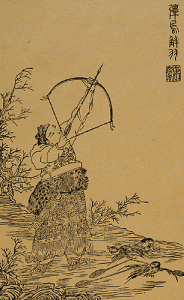 If we can interpret certain ancient myths correctly, they could lead us to more accurate and penetrating views of the history of the Earth and the solar system. They might teach us about the forces at work and explain anomalies bequeathed to us by a long-hidden past. But how can we interpret these myths, the products of minds so far removed from ours? How do we know which interpretation is correct, if any? Are we doomed to speculate without ever achieving certainty?
If we can interpret certain ancient myths correctly, they could lead us to more accurate and penetrating views of the history of the Earth and the solar system. They might teach us about the forces at work and explain anomalies bequeathed to us by a long-hidden past. But how can we interpret these myths, the products of minds so far removed from ours? How do we know which interpretation is correct, if any? Are we doomed to speculate without ever achieving certainty?
Here we will interpret two Bronze Age myths to illustrate the high scientific value such myths might contain. We will also see how easy it can be to understand a myth once the right interpretation becomes available.
Tags: Ancient China, Ancient Greece, Bronze Age catastrophes, comets, earth science, history of solar system, interpretation of myths, Jupiter, myths, philosophy of science, planetary science, Velikovsky, venus, Zeus

There are two sides to every story. Judges rightly admonish juries to check out both sides before coming to a conclusion. Our entire system of adversarial justice is built on this principle. But under surveillance by FBI in the 2001 anthrax mailings case, U.S. Army scientist Bruce Ivins committed suicide. So only one side got to tell its version of the story.
Upon closing the case on February 19, 2010, FBI issued an Amerithrax Investigative Summary that concludes that Ivins was the anthrax mailer. The Summary contains serious errors as well as minor ones. It also omits crucial information. So, to ensure a fair outcome, we need to look at it through the eyes of a defense attorney, to make sure that the American people can check out both sides of the story before coming to a conclusion.
Tags: al Qaeda, anthrax mailings, biodefense, Bruce Ivins, FBI, Jdey, terrorism
 The apparent misdeeds and cover-ups of the administration of George W. Bush related to the terrorist attacks of 2001 remain in historical limbo. Neither presidents, nor the Congress, nor the media have gotten to the bottom of these tragic events. The 9/11 Commission Report, while providing hundreds of useful details, egregiously and unpardonably failed to examine the doings of senior government officials in the run-up to 9/11 and so must be considered a cover-up. As a result, the American public has not come to closure on the 9/11 attacks or on the anthrax mailings of 2001, nor is there a shared understanding of such a critical issue as the real reasons that the US attacked Iraq in 2003.
The apparent misdeeds and cover-ups of the administration of George W. Bush related to the terrorist attacks of 2001 remain in historical limbo. Neither presidents, nor the Congress, nor the media have gotten to the bottom of these tragic events. The 9/11 Commission Report, while providing hundreds of useful details, egregiously and unpardonably failed to examine the doings of senior government officials in the run-up to 9/11 and so must be considered a cover-up. As a result, the American public has not come to closure on the 9/11 attacks or on the anthrax mailings of 2001, nor is there a shared understanding of such a critical issue as the real reasons that the US attacked Iraq in 2003.
These failures have left the field open to wild speculations regarding these events, generally termed “conspiracy theories”, though this term obscures the crucial distinction between elaborate prospective plots involving many actors (silly in the context of an open society) and retrospective cover-ups that government officials who have made embarrassing mistakes are all too prone to engage in (very realistic and plausible). However, it is also true that simple prospective plots involving two or three individuals can occur.
Failure to reach a full, shared understanding of major events that led to interminable wars and occupations in the Middle East and Southwest Asia as well as to the undermining of civil liberties has helped to alienate Americans from their government and media, a triumph for America’s enemies. So we must make every effort to establish a clear common interpretation of what actually happened.
Tags: 9/11 attacks, Able Danger, al Qaeda, anthrax mailings, biodefense, Bush Administration, conspiracy theories, Dick Cheney, FBI, Flight #587, George W. Bush, I. Lewis Libby, Ivins, Jdey, Paul Wolfowitz, shoebombing, terrorism
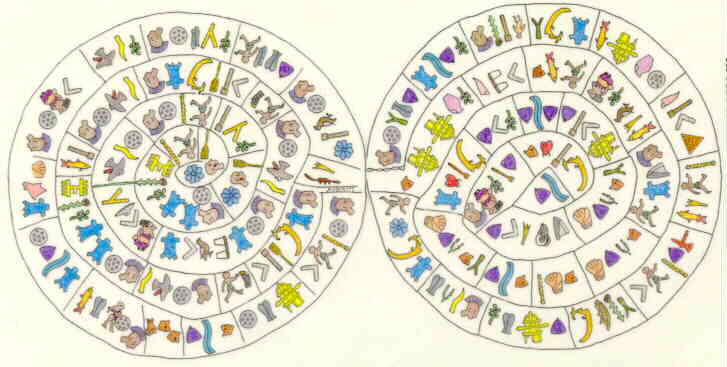 The famous spiral disk found in Phaistos, Crete in 1908 has long defied efforts to translate it or even to identify the language in which it is written or what kind of a document it might be (it is here in color to aid analysis). Though many scholars and amateurs have proposed theories and even translations, none has seemed persuasive to the great majority of observers. A skeptical view holds that the disk is a forgery, but most scholars reject this. Many scholars agree that the small sample of language in the disk makes a breakthrough very unlikely unless and until other samples of the writing are found.
The famous spiral disk found in Phaistos, Crete in 1908 has long defied efforts to translate it or even to identify the language in which it is written or what kind of a document it might be (it is here in color to aid analysis). Though many scholars and amateurs have proposed theories and even translations, none has seemed persuasive to the great majority of observers. A skeptical view holds that the disk is a forgery, but most scholars reject this. Many scholars agree that the small sample of language in the disk makes a breakthrough very unlikely unless and until other samples of the writing are found.
Tags: Ancient Greece, ancient history, crete, Etruscan, linguistics, Phaistos disk, Trojan
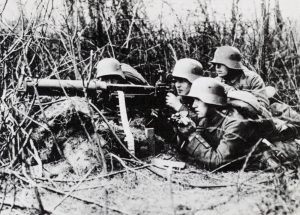 In World War I Imperial Germany faced the daunting task of fighting Great Britain, France, and Russia (replaced in 1917 by the United States) at the same time. Mindful of the unfairness inherent in passing judgment in hindsight, we can usefully ask whether Germany might have won the war even against these odds had it not made too many serious mistakes. “What if?” history of this sort can help us understand better what actually happened, and it can provide precautionary lessons for the future. Here is a list of key German mistakes, omitting errors at the battlefield level, in this colossal human tragedy.
In World War I Imperial Germany faced the daunting task of fighting Great Britain, France, and Russia (replaced in 1917 by the United States) at the same time. Mindful of the unfairness inherent in passing judgment in hindsight, we can usefully ask whether Germany might have won the war even against these odds had it not made too many serious mistakes. “What if?” history of this sort can help us understand better what actually happened, and it can provide precautionary lessons for the future. Here is a list of key German mistakes, omitting errors at the battlefield level, in this colossal human tragedy.
Tags: Austria-Hungary, German mistakes, Germany, Kaiser Wilhelm II, Schlieffen Plan, strategy, unrestricted submarine warfare, what-if history, World War I, Zimmermann Telegram
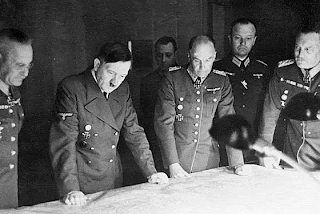
By all accounts, Nazi Germany made serious errors in waging the Second World War that kept it from achieving much greater success, though whether it could have won the War remains open to doubt, given the American effort to develop nuclear weapons. Also, Japanese mistakes need to be taken into consideration. At any rate, asking “What if” questions about German strategy can help us better understand what actually happened.
Here is a list of key German mistakes that can guide our thinking about the many lessons we can learn from this greatest of wars (not included are significant errors at the battlefield level such as at Dunkirk and Stalingrad). Of course, this list assumes that Germany’s decision to go to war in the first place and with the goals it had for doing so made sense. I thank my students for their contributions to the list.
Tags: Adolf Hitler, Axis, Battle of Britain, Eastern Front, Holocaust, japanese strategy, Mussolini, Nazi Germany, prisoners of war, Second World War, war mobilization, Wehrmacht, World War II
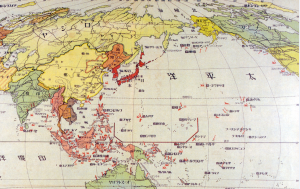 When Japan went to war against the United States in 1941, its chances of winning were slim, indeed. But it is worth asking what steps Japan might have taken, or what mistakes it might have avoided, to increase the likelihood of greater success and possibly even victory.
When Japan went to war against the United States in 1941, its chances of winning were slim, indeed. But it is worth asking what steps Japan might have taken, or what mistakes it might have avoided, to increase the likelihood of greater success and possibly even victory.
Tags: Japan, naval warfare, Nazi Germany, Pacific War, Second World War, strategy
 One of the world’s most famous monuments, Stonehenge abounds in mysteries and anomalies.
One of the world’s most famous monuments, Stonehenge abounds in mysteries and anomalies.
 If we can interpret certain ancient myths correctly, they could lead us to more accurate and penetrating views of the history of the Earth and the solar system. They might teach us about the forces at work and explain anomalies bequeathed to us by a long-hidden past. But how can we interpret these myths, the products of minds so far removed from ours? How do we know which interpretation is correct, if any? Are we doomed to speculate without ever achieving certainty?
If we can interpret certain ancient myths correctly, they could lead us to more accurate and penetrating views of the history of the Earth and the solar system. They might teach us about the forces at work and explain anomalies bequeathed to us by a long-hidden past. But how can we interpret these myths, the products of minds so far removed from ours? How do we know which interpretation is correct, if any? Are we doomed to speculate without ever achieving certainty?
